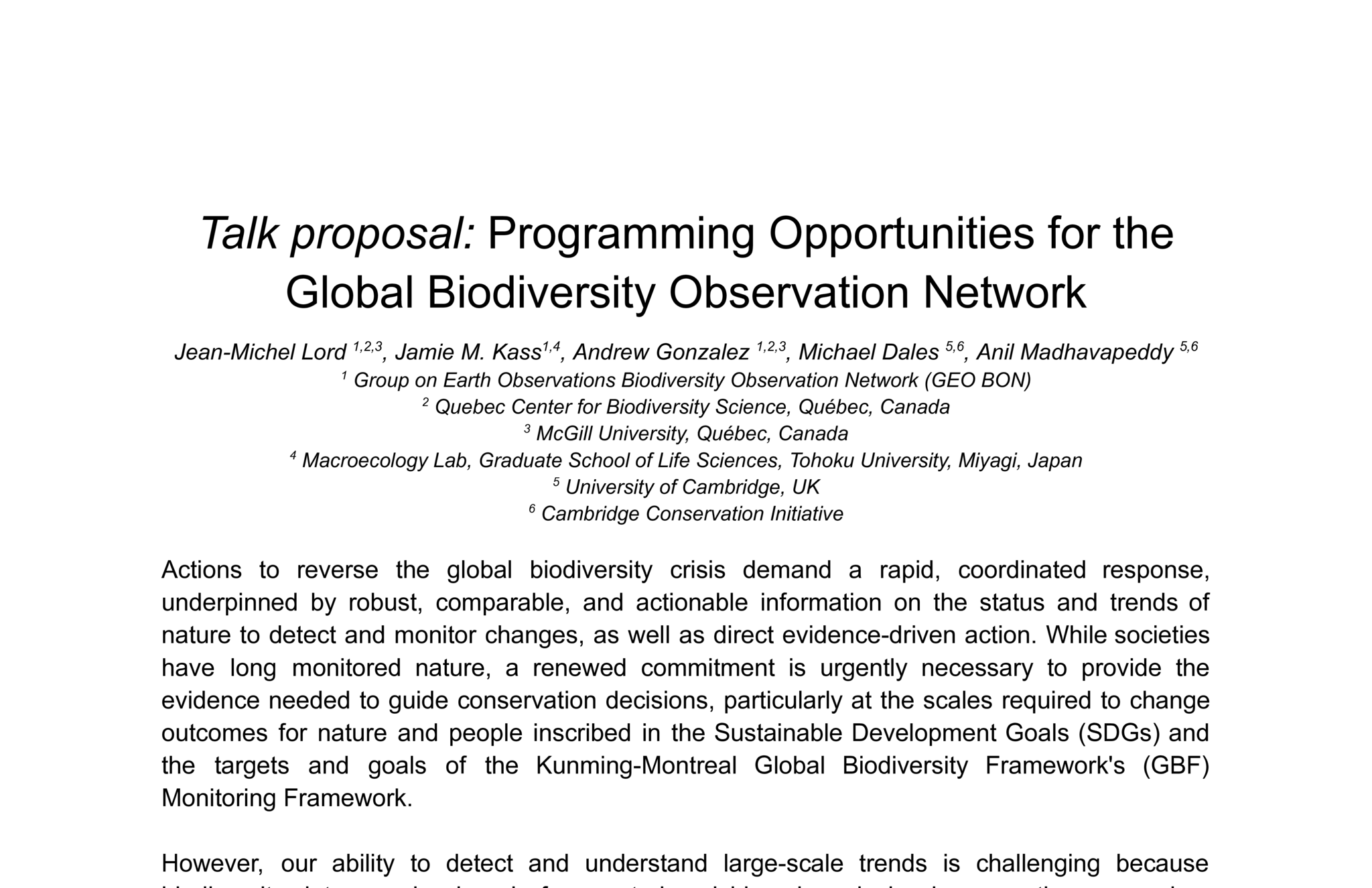Programming Opportunities for the Global Biodiversity Observation Network
Jean-Michel Lord, Jamie Kass, Andrew Gonzalez, Michael Dales, and Anil Madhavapeddy.
Paper in the abstracts of the 2025 ACM SIGPLAN Programming for the Planet Workshop.
Actions to reverse the global biodiversity crisis demand a rapid, coordinated response, underpinned by robust, comparable, and actionable information on the status and trends of nature to detect and monitor changes, as well as direct evidence-driven action. While societies have long monitored nature, a renewed commitment is urgently necessary to provide the evidence needed to guide conservation decisions, particularly at the scales required to change outcomes for nature and people inscribed in the Sustainable Development Goals (SDGs) and the targets and goals of the Kunming-Montreal Global Biodiversity Framework's (GBF) Monitoring Framework.
However, our ability to detect and understand large-scale trends is challenging because biodiversity data remains largely fragmented and biased, and also because the approaches used to record, aggregate, and analyse monitoring data to detect trends and attribute causes are varied and not standardized. These challenges slow down progress and make reporting practices inconsistent across projects, organizations, and nations, thereby hindering effective assessment and action. The collection and documentation of biodiversity data has increased exponentially in recent years with a similar growth in the number of databases. However, heterogeneous coverage, protocols, and standards hamper their ready use and interpretation. An ongoing effort has been the establishment of global Biodiversity Observation Networks (BONs) that are a community of practice, applying a network approach to coordinating biodiversity observation programs and efforts. A BON can be:
- local, sub-national, national, regional or global in scale of operation and can cover one or multiple aspects of biodiversity;
- structured around themes, methods, biomes or specific taxonomic groups; and
- a networking point for people who want to strengthen biodiversity observations in a region.
BONs coordinate the collection, dissemination, and use of national, regional, or thematic biodiversity data, thus acting as both data generators and hubs. Some1 of these are organized collectively under the global organization “GEO BON” , which promotes collaboration and coordination among BONs.
However, without a unifying programming platform to consolidate the diverse measurements across BONs, it will remain difficult to use these datasets reliably. For this reason, GEO BON piloted the creation of BON in a Box, an open and collaborative platform that provides a suite of analysis tools and resources, supporting biodiversity analyses and the establishment and operation of BONs.
In this talk, we will describe the emerging "BON in a Box Pipelines" module that offers four key functions:
- calculating essential biodiversity variables—that describe the state of nature—through modular and reusable pipelines to enable rapid detection of biodiversity trends;
- calculating biodiversity indicators to track progress towards goals and targets;
- enhancing monitoring by suggesting priority areas where data gaps necessitate further field data collection to improve models (under development); and
- sharing science by transforming manual workflows into automated data-transformation pipelines that can be reproduced or improved by others.
